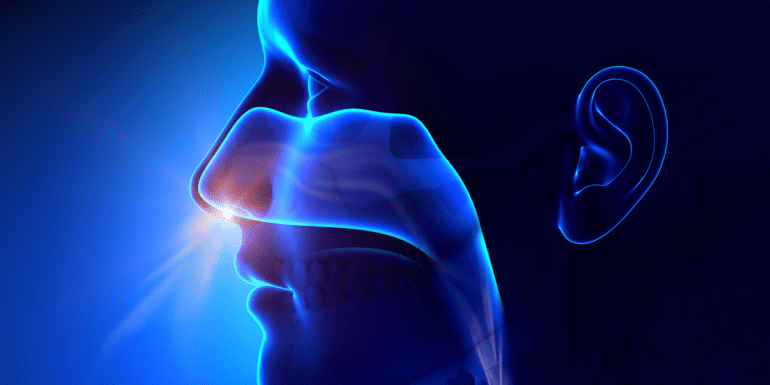TL;DR:
- Collaboration between Monell Chemical Senses Center and Osmo leverages machine learning to study odor perception.
- Machine-learning model achieves human-level proficiency in describing the smell of chemicals.
- Research bridges gaps in understanding the sense of smell, potentially leading to digitizing odors.
- Model accurately correlates odor descriptions with molecular structures, creating a mapping of scents.
- Validation shows the model’s ability to predict odor qualities surpasses individual panelists.
- Model performs tasks beyond its training, identifying similar smells and predicting odor strength.
- Implications include potential advances in fragrance, flavor, and functional scent industries.
Main AI News:
Exploring the intricacies of our sensory experiences, neuroscientists have long sought to decode how our senses translate external stimuli into our conscious perception. While sight, sound, taste, and touch have been studied extensively, the realm of smell presents a more complex puzzle, defying easy comprehension.
A groundbreaking collaboration between the Monell Chemical Senses Center and the innovative start-up Osmo is poised to reshape our understanding of odor perception. Leveraging insights from cutting-edge machine learning research, Osmo, a company that emerged from Google Research’s endeavors, is joining forces with experts to unravel the complex web of connections between airborne chemicals and the intricate realm of odor perception within the brain.
This pioneering research has unveiled a remarkable revelation: a machine-learning model has achieved a level of proficiency comparable to human capability in describing the olfactory properties of chemicals using words. These pivotal findings have been detailed in the latest edition of Science, highlighting the pivotal role this research plays in bridging the gaps in our comprehension of olfaction.
Joel Mainland, PhD, a distinguished co-author and Monell Center Member, underscores the significance of this model. He emphasizes how this collaborative effort addresses longstanding gaps in the understanding of olfaction, propelling the world closer to a future where odors can be digitized, recorded, and reproduced. Beyond this transformative aspect, the study holds promise for revolutionizing industries reliant on fragrances and flavors. This includes the potential to identify novel scents for applications such as mosquito repellents and malodor-masking agents, ushering in an era of sustainability by reducing dependence on endangered plants.
The Dynamics of Neural Scent Perception
Central to the study’s revelations is the intricate interplay between our brains and olfactory receptors. Unlike vision or taste, where the number of receptors is comparatively limited, humans possess around 400 functional olfactory receptors. These receptors, positioned at the end of olfactory nerves, interact with airborne molecules to transmit signals to the olfactory bulb, initiating our perception of smell.
However, the question of how molecular properties translate into specific smells has long eluded researchers. The enigmatic nature of this connection has confounded scientists attempting to decipher the complexities of olfaction. Mainland aptly notes that while computers have successfully digitized vision and hearing, the elusiveness of smell, our oldest and deepest sense, has been an unconquered frontier.
Addressing this, Osmo’s CEO, Alex Wiltschko, PhD, and his team embarked on a mission to create a model that could correlate the descriptive prose of a molecule’s odor with its molecular structure. The resultant model unveiled a mapping of interactions that groups similarly scented odors, unveiling distinct categories such as floral sweet and candy sweet.
The Quest for Objective Odor Classification
The model’s journey to proficiency was underpinned by training using a robust industry dataset encompassing molecular structures and odor qualities of 5,000 known odorants. The input involved the molecular shape, while the output comprised predictions of odor descriptions using words. Rigorous validation followed, with Monell researchers employing a blind validation procedure. A panel of trained participants described new molecules and their descriptions were compared with the model’s outputs.
This process was a testament to the model’s accuracy. The panelists, equipped with lab-designed odor reference kits, meticulously associated smells with descriptive terms. Each odorant was assessed using a 55-word scale, ranging from mint to musty. The validation procedure showcased the model’s ability to predict odor qualities, exceeding the performance of individual panelists for a significant portion of the odors tested.
Notably, the model achieved tasks beyond its training, making precise predictions regarding odor strength and identifying structurally dissimilar molecules with unexpectedly similar scents. This versatility points to a new era in olfactory research and the potential for a reimagined tool for investigating olfactory sensation.
Pioneering Possibilities: The Future of Olfactory Mapping
Looking ahead, the implications of this study are profound. The envisioned organization of the model map based on metabolic considerations could usher in a paradigm shift in how scientists perceive odors. Traditional classification, based on chemical components, may give way to an arrangement reflecting the nutrients from which the odors derive.
As Joel Mainland succinctly phrases it, “Our brains don’t organize odors in this way.” The emergence of this alternative map underscores the ongoing evolution of our understanding of scent perception and the captivating journey that continues to illuminate the mysteries of our olfactory experiences.
Conclusion:
The breakthrough AI-powered model’s success in deciphering the complexities of odor perception has transformative implications for various industries. The digitization of odors could revolutionize the fragrance and flavor markets, reducing dependence on natural sources and enabling the discovery of novel functional scents for diverse applications. The enhanced understanding of odor properties could lead to innovations in products ranging from mosquito repellents to malodor masking solutions. The model’s ability to surpass human predictions and reveal previously unknown odor relationships positions it as a valuable tool for research, paving the way for an evolved approach to understanding olfactory experiences.

